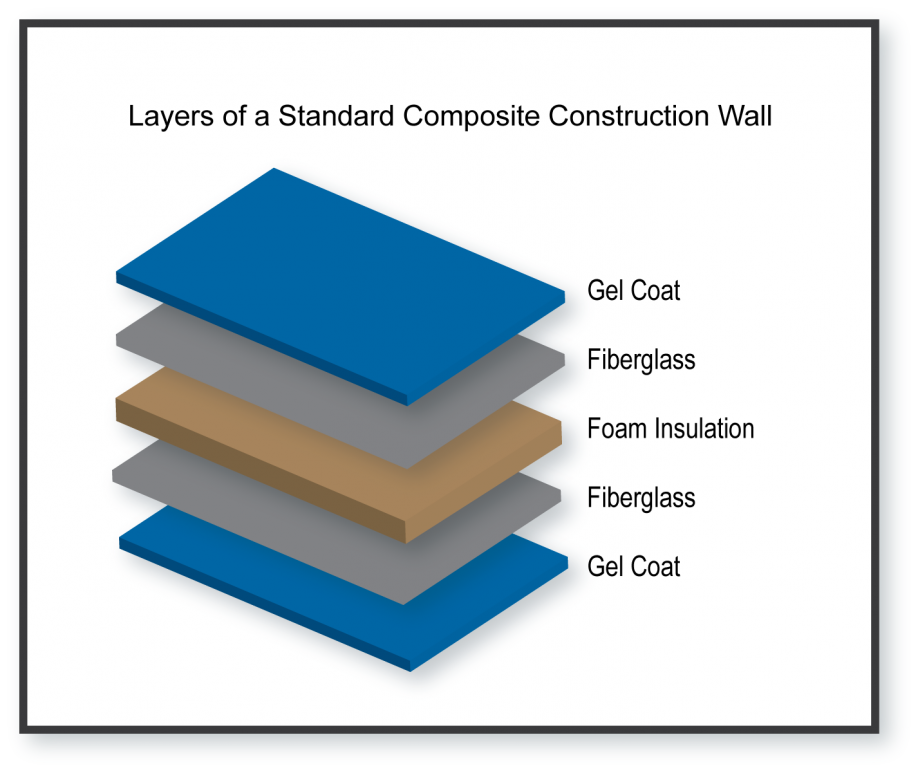Composites: The Future of Sustainable Construction Materials
Composites: The Future of Sustainable Construction Materials
Blog Article
Unlocking the Environmental Benefits of Recycled Composites in Building And Construction and Design
In the realm of building and layout, the application of recycled compounds holds considerable guarantee for enhancing sustainability methods and minimizing ecological influence (composites). By integrating these cutting-edge materials, there is a possible to attend to important problems such as waste reduction, energy preservation, and a decline in carbon impact. The change towards a more sustainable future in these markets rests on opening the full possibility of recycled compounds. This discussion will explore the multifaceted benefits and difficulties connected with incorporating recycled composites right into construction and design, offering a glance into the transformative opportunities that exist ahead.

Environmental Impact Decrease
The decrease of environmental effect through the use of recycled composites in building and style plays a vital function in sustainable techniques. By incorporating recycled composites into structure products, the construction industry can significantly lower its carbon impact and add to an extra eco-friendly future. These lasting products, made from repurposed plastics, timber fibers, or other recycled elements, offer a viable choice to typical building and construction materials without jeopardizing on top quality or toughness.
Recycled composites help divert waste from garbage dumps and lower the requirement for removing resources, therefore conserving all-natural sources. Furthermore, the production procedure of these composites frequently consumes less power and discharges less greenhouse gases compared to creating virgin products (composites). This shift towards making use of recycled composites not only reduces environmental harm however likewise advertises a round economy by motivating the reuse of products that would certainly or else be thrown out
Waste Minimization
With an emphasis on decreasing waste in building and construction and design, the assimilation of recycled composites provides a lasting option to minimize ecological impact. Waste reduction is an essential facet of sustainable techniques, and using recycled compounds offers a chance to accomplish this goal efficiently. By utilizing products that have already served their initial purpose, such as recycled plastics or redeemed wood fibers, the building and construction and style sectors can substantially minimize the quantity of waste generated and sent out to landfills.
Recycled compounds have the prospective to divert substantial amounts of waste from conventional disposal methods, adding to a more round economy where sources are made use of successfully. Additionally, the production procedure of recycled composites usually consumes much less power and generates fewer discharges contrasted to virgin products, further reducing the ecological footprint of building and style jobs.
Implementing waste reduction techniques through the unification of recycled compounds not only aids in preserving natural resources however also advertises an extra lasting technique to building and developing for a greener future.
Energy Conservation
Including recycled composites not only reduces waste in building and construction and style but likewise plays a critical role in improving energy conservation techniques within the sector. Making use of recycled composites in construction can substantially add to power conservation with numerous ways. To start with, the manufacturing of virgin products typically requires substantial power inputs, whereas using recycled composites takes in much less power, consequently reducing general energy intake. In addition, integrating recycled compounds can add to much better insulation buildings in buildings, minimizing the requirement for too much home heating or cooling, and as a result decreasing power usage for environment control. The light-weight nature of many recycled compounds can lead to lighter structures, requiring less power for transport and installation. By advertising the usage of recycled composites in building and construction and layout, the market can make considerable strides towards attaining energy effectiveness and decreasing its carbon impact, ultimately adding to an extra sustainable constructed atmosphere.
Carbon Footprint Reduction
Enhancing sustainability practices with the application of recycled compounds in building and construction click over here now and design dramatically lowers the carbon footprint of the sector. By including recycled products into the manufacturing of composites, the demand for virgin sources decreases, leading to lower power consumption and greenhouse gas exhausts associated with standard manufacturing procedures. This reduction in carbon footprint is crucial in combating environment adjustment and promoting a much more eco-friendly technique to building and style.
The carbon impact decrease accomplished with the fostering of recycled composites lines up with the worldwide push in the direction of lasting practices and the reduction of commercial exhausts. Ultimately, by focusing on the combination of recycled compounds, the market can make considerable strides in lowering its carbon footprint and adding to a more lasting future.
Sustainable Future
The assimilation of recycled composites in building and design not just addresses instant environmental problems yet additionally lays a solid structure for a sustainable future in the industry. By including recycled composites right into building products and items, the construction additional resources and layout industries can substantially decrease their dependence on virgin resources, leading to a more circular economic climate. This shift towards sustainability is important for alleviating the ecological impact of standard building and construction techniques, which frequently cause high degrees of waste generation and resource depletion.

Final Thought
To conclude, recycled composites use considerable ecological benefits in building and style by decreasing ecological impact, minimizing waste, saving energy, decreasing carbon footprint, and advertising a lasting future. Embracing the use of recycled composites can add to a much more environmentally-friendly method to building and design, eventually causing a much more sustainable and greener future for all.
The reduction of environmental impact via the usage of recycled composites in building and style plays a critical duty in sustainable methods.With a focus on reducing waste in building and layout, the assimilation of recycled composites offers a lasting remedy to decrease ecological effect. By advertising the usage of recycled compounds in construction and design, the sector can make considerable strides towards attaining energy effectiveness and decreasing its carbon impact, eventually adding to a more sustainable constructed environment.

Report this page